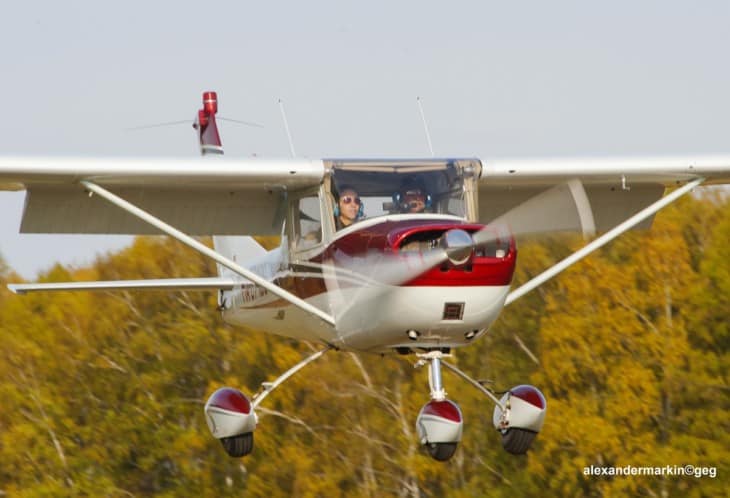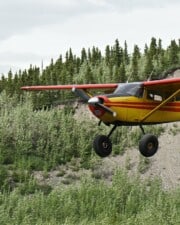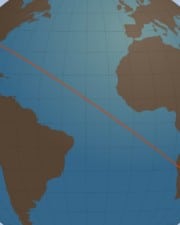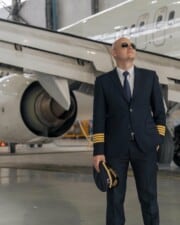Most people have heard of the solo flight during flight training. But it isn’t until you start learning to fly that you fully appreciate just how much stuff you have to grasp before you can do it completely on your own.
Your first solo flight is a big occasion–the first big milestone in your training. While you aren’t ready to get your license yet, it’s the chance to yourself and everyone around that you can indeed fly a plane safely on your own. A lot is expected of you to get to that point–there are regulation requirements you must meet and specific maneuvers you need to know. But, most importantly, you must have proven to your instructor that you can perform the flight safely no matter what happens.
Solo Flight Meaning – What is a Solo Flight?
In flight training, a solo flight is one that you do alone. For nearly all of your lessons, you’ll have a certified flight instructor (CFI) sitting next to you at the controls. But for a few key flights, your instructor will let you take the plane alone.
Solo flights are a pivotal point in any pilot’s flight training. While your CFI knows it, the solo proves to you that you know what you’re doing and removes any self-doubt. When your instructor sits next to you, you always wonder how much they are helping. But once you leave your CFI on the ground, there’s no doubt that you’ve got the right stuff.
It’s worth noting that solo flight lessons are still flight lessons. You’ll have some assigned maneuvers to do, and you will brief and debrief the flight with your flight instructor.
Solo Flight Limitations
There are some limitations placed on student pilots to ensure safety. Every solo you do will be under the supervision of your instructor–they’ll help you check the weather and pick your activities to ensure that everything is well within your abilities.
A few things require some extra training and approval from your flight instructor should you want to do them on a solo flight. For example, you aren’t allowed to enter Class B airspace (the type of airspace found around the nation’s largest airports) on a solo flight without an instructor’s endorsement. Some Class B airports prohibit student operations altogether.

Student pilots are also prohibited from flying with any passengers, for compensation or hire, or in the furtherance of business. There are also strict weather limits for students, and you can’t solo on a flight when the visibility is less than three miles (five miles at night) or when you can’t see the surface. Finally, solo student pilots cannot participate in Land and Hold Short Operations (LAHSO) at those airports.
These limitations are dispersed throughout the FARs, but the most pertinent regarding weather is found in Part 61.89
Solo Flight Requirements
There’s a lot to learn before you can safely solo an aircraft.
The Federal Aviation Regulations (FARs) explicitly lay out what a student must learn and accomplish before they can solo the aircraft. Those requirements are broken into two parts–aeronautical knowledge and flight training.
Pre-Solo Aeronautical Knowledge
Before soloing, you must complete a written exam administered by your flight instructor. To pass it, you’ll have to have learned the following topics, which are required by FAR 61.87.
- Regulations from Part 61 and 91
- Airspace rules and procedures for your airport
- Limitations and flight characteristics of your aircraft
Once you take the exam, you’ll sit and review the answers with your instructor to ensure you understand even those questions that you answered incorrectly.
Flight Training Before Solo
FAR Part 61.87 also lists the precise maneuvers you must learn before soloing, with sections for every different type of aircraft.
The rules are slightly different from aircraft to aircraft, but since most pilots solo in single-engine airplanes, that’s what we’ll discuss here. This list has been reorganized and simplified for clarity. If you need the complete list, be sure to look it up in the FARs.
- Preflight planning and preparations
- Aircraft systems and operation
- Taxiing and runups
- Normal and crosswind takeoffs
- Straight and level flight, turns, climbs and climbing turns, descents and descending turns (high and low drag)
- Flight at various airspeeds, from slow flight to cruise
- Airport traffic pattern operations with entry and exit procedures
- Collision, wind shear, and wake turbulence avoidance
- Stall entries and recovery procedures
- Emergency procedures and equipment malfunctions
- Ground reference maneuvers
- Approaches and landings after engine failures
- Go around
- Slips to a landing
- Normal and crosswind landings
The average student needs between 10 and 30 hours of flight time to cover all of this–plus a ton of ground lessons. So there’s a lot of material to learn, and things like learning how to land an airplane take a lot of time and practice. The amount of material to learn can be one of the reasons many people fail flight training.
Solo Flights From the CFI’s Perspective
To really understand what’s involved in a solo, it’s important to consider the issue from your CFIs perspective. The regulations give the flight instructor quite a bit of authority when deciding when a student is ready to solo. While there’s a lengthy list of maneuvers to learn, nothing is said about how many hours it takes or how well you should know them.
Most flight schools have established their own system in addition. For example, most flight programs will have students pass a progress check with a chief or assistant chief flight instructor before doing their solo flight. This provides a second opinion so that both the CFI and student can confidently progress to the solo flight.
Remember when you were a teenager and begged your dad to let you take his car for a night out on the town? Dad had 16 years of evidence as to whether or not he should trust you. Your CFI is probably a little less emotionally invested in the situation than Dad but perhaps even more aware of the immense responsibility of handing over the keys to an airplane.
One of the biggest things students need to prove is that they can make sound decisions while flying the plane. Doing so requires having a firm foundation of knowledge and flight skills and being able to exercise what CFIs often call “command authority.”
Typical First Solo Flights
So your CFI says you’re good to go. What does the typical first solo look like?
In the early days of flight training, it’s not uncommon for students to be inconsistent. Some days they’re on the top of their games, nailing every landing and maneuver like airline transport pilots. Other days are messy, with bumpy landings and lots of help required from your CFI. It’s all part of learning.
Flight instructors have devised methods to ensure that they don’t send you out solo on an “off day.” They’ll plan a regular training flight and see how you do. If your flying is on-point, the weather is cooperative, and they don’t have to touch the controls, they’ll tell you to pull up to the ramp and get out of the plane.
And just like that, you’re alone at the controls. They’ll tell you to take one or two turns in the traffic pattern–takeoffs and landings all by yourself. Your instructor will be watching from the ground and probably listening in from air traffic control. Some even go up to the control tower to watch.
But it doesn’t matter, because now you’re alone in the plane. Your first solo is usually less than a half-hour and not very much different than a dozen or more training flights you’ve done at your local airport. But, of course, it feels way different to you.

What Happens After Solo Flight
As momentous an occasion as the solo is, it’s only the end of the first phase of flight training. But before you get to that, it’s time to celebrate.
Solo Flight Traditions
Flight schools have their little celebrations and traditions after the solo. Every school is different, but the basic idea of celebrating your solo as a big occasion comes from military training academies. It’s a basic rite of passage in becoming a pilot.
One of the oldest ways to mark the tradition is the shirttail cutting. Some stories claim that in the earliest days of aviation, the instructor sat behind the student and tugged on the student’s shirttail to get their attention or tell them something. Cutting the shirttail off indicated that that was no longer necessary–that the instructor had confidence in the student to do it alone.
A fun tradition that has stemmed from the shirttail cutting is having the instructor mark or sign the shirt. Many pilots still have their cut shirttails for years after as keepsakes. So remember, don’t wear your favorite shirt on solo day.
In British countries, it was custom to dunk pilots with buckets of water after their first solo. If shirttail cutting isn’t in vogue at your school, you might want to bring a set of dry clothes to change into.
More to Learn After Solo
Your first solo flight is a big milestone in your flight training, but there’s still plenty more to learn. Most private pilot programs consist of three phases or stages, with the first solo flight marking the end of the first stage.
The next training phase will involve a few more solo flights and some new maneuvers. You’ll start mastering takeoffs and landings with a little more accuracy and learn how to do them on soft (grass) or short fields.
You’ll also start learning about flying to other airports. Cross countries require new skills, emphasizing navigation and what to do if you become lost. As defined for flight training, a cross-country flight is to an airport more than 50 nautical miles distant. And once you’ve mastered those skills with your CFI, you’ll practice them flying solo as well.
Related Posts













